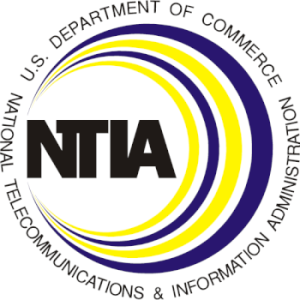In a concerted effort to modernize the United States’ telecommunications infrastructure, Representatives Doris Matsui (D-CA) and Bob Latta (R-OH) have reintroduced the National Telecommunications and Information Administration (NTIA) Reauthorization Act. This bipartisan legislation seeks to reauthorize the NTIA for the first time in over three decades, aiming to enhance the agency’s spectrum management capabilities and update its mission to address contemporary technological challenges.
The NTIA, established in 1978, serves as the executive branch agency responsible for advising the President on telecommunications and information policy issues. Despite its pivotal role, the agency has not been reauthorized since 1992. The proposed reauthorization act intends to provide the NTIA with the necessary tools and directives to manage the nation’s spectrum resources effectively, coordinate on artificial intelligence and cybersecurity issues, and implement a national broadband strategy encompassing over 100 federal initiatives.
Key Provisions of the Reauthorization Act
The reintroduced legislation encompasses several critical components designed to modernize the NTIA’s functions:
-
Elevating Leadership: The proposal suggests promoting the head of the NTIA to the position of Under Secretary of Commerce for Communications and Information, reflecting the agency’s growing importance in the current technological landscape.
-
Establishing Specialized Offices: This provides statutory authority for the creation of two NTIA offices, focusing on public safety communications and international telecommunications policy, respectively.
-
Spectrum Management Enhancement: The legislation aims to improve the NTIA’s ability to execute a national spectrum strategy, ensuring efficient use of this finite resource amid growing demand from various sectors.
-
Incorporating Related Initiatives: The act includes provisions from the Spectrum Coexistence Act, which mandates a review of federal receiver technology to support more intensive spectrum use, and the SMART Spectrum Act, co-authored by Matsui and Congressman Brett Guthrie (R-KY), which develops an Incumbent Informing Capability (IIC) to facilitate real-time spectrum sharing between federal and commercial users.
Representatives Matsui and Latta previously introduced the NTIA Reauthorization Act during the last Congress, where it successfully passed through the House of Representatives. The current reintroduction underscores the ongoing commitment to modernizing the NTIA and reflects bipartisan consensus on the need for updated telecommunications policy. Energy and Commerce Committee Chair Cathy McMorris Rodgers (R-WA) emphasized the importance of aligning the NTIA’s mission with the modern communications ecosystem, highlighting the agency’s role in closing the digital divide and securing connectivity for all Americans.
Implications for the Telecommunications Landscape
Reauthorizing the NTIA is anticipated to have far-reaching implications for the U.S. telecommunications sector:
-
Enhanced Spectrum Management: By providing the NTIA with updated tools and directives, the act aims to ensure more efficient and effective management of the nation’s spectrum resources, which is vital for the expansion of wireless technologies and services.
-
Improved Coordination on Emerging Technologies: The legislation’s focus on artificial intelligence and cybersecurity positions the NTIA to better address the challenges and opportunities presented by rapid technological advancements.
-
Closing the Digital Divide: With a national broadband strategy encompassing numerous federal initiatives, the act aims to streamline efforts to provide internet access to underserved and unserved communities, promoting digital equity nationwide.
The reintroduction of the NTIA Reauthorization Act by Representatives Doris Matsui and Bob Latta represents a significant step toward modernizing the United States’ telecommunications framework. By updating the NTIA’s mission and enhancing its capabilities, the legislation aims to equip the agency to effectively navigate and manage the complexities of the contemporary technological landscape, ultimately fostering innovation and ensuring robust communication networks for all Americans.



